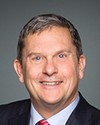My second question was on whether those kinds of rebates are given back to the customer. Do they get a a percentage of rebates, or do all the rebates go to the pharmacists? Do you have that kind of information?
Evidence of meeting #11 for Health in the 42nd Parliament, 1st session. (The original version is on Parliament’s site, as are the minutes.) The winning word was pharmacists.
A recording is available from Parliament.




